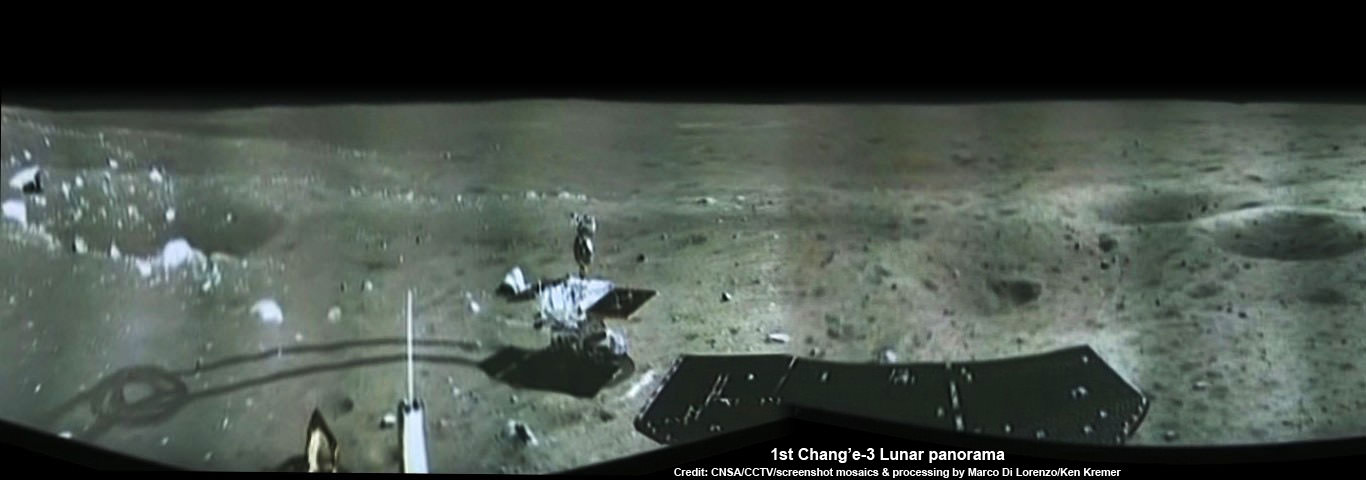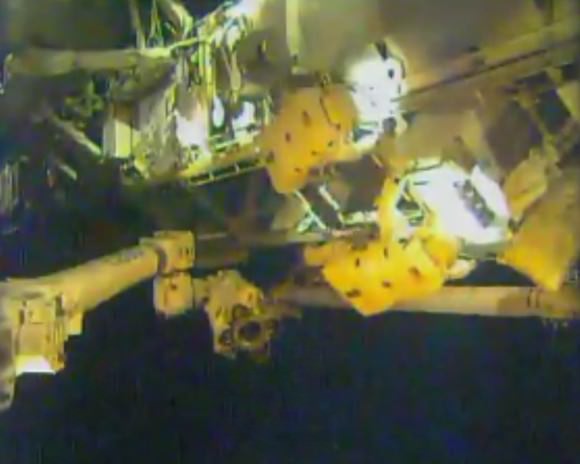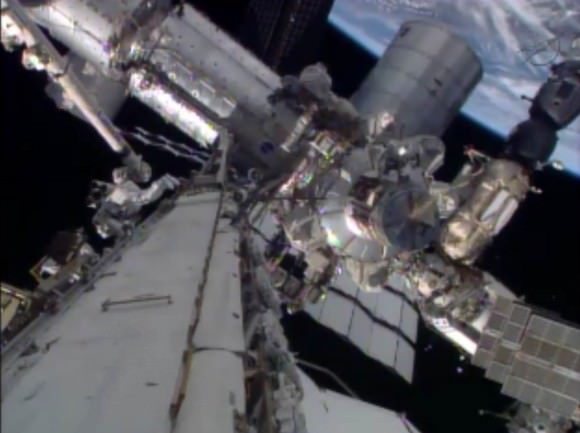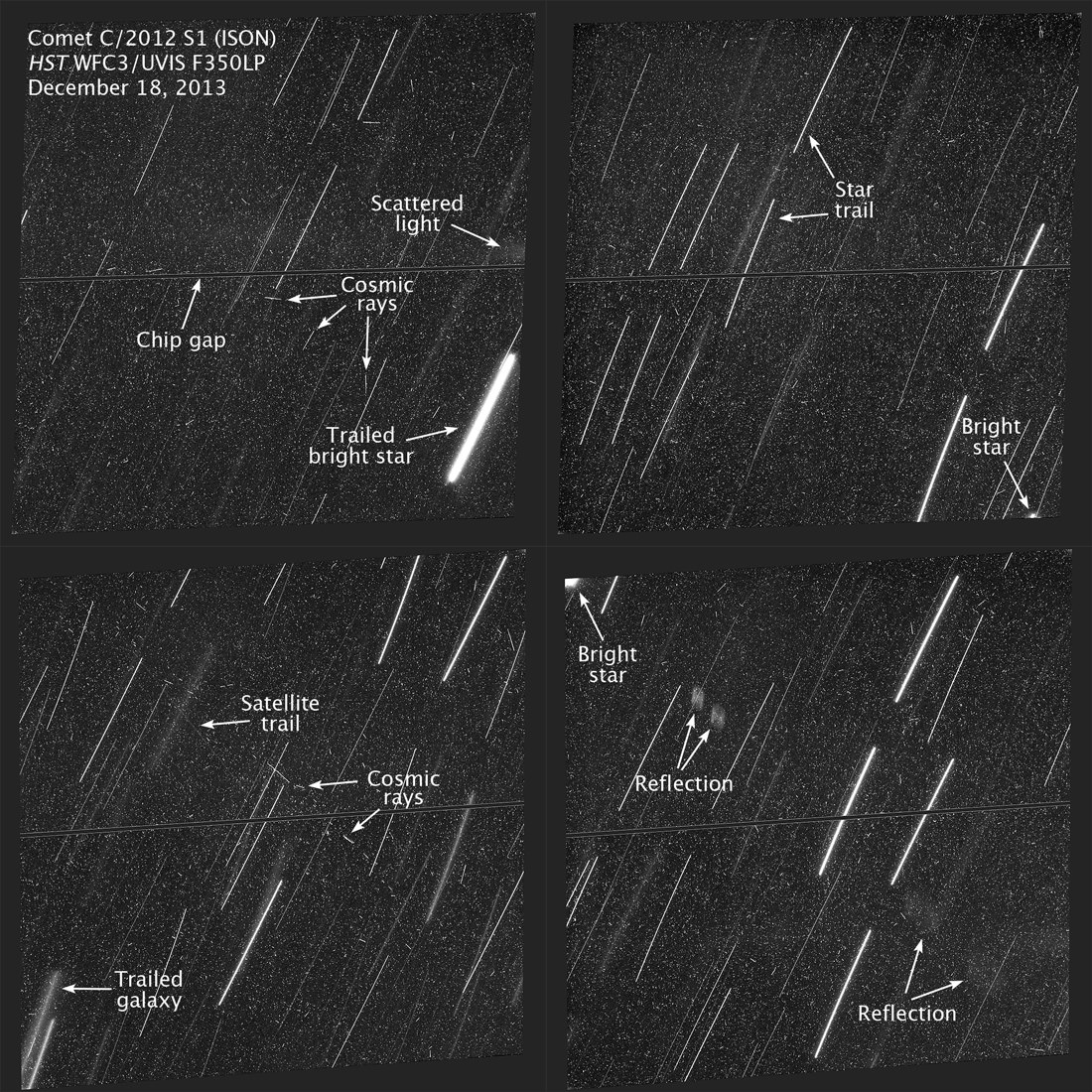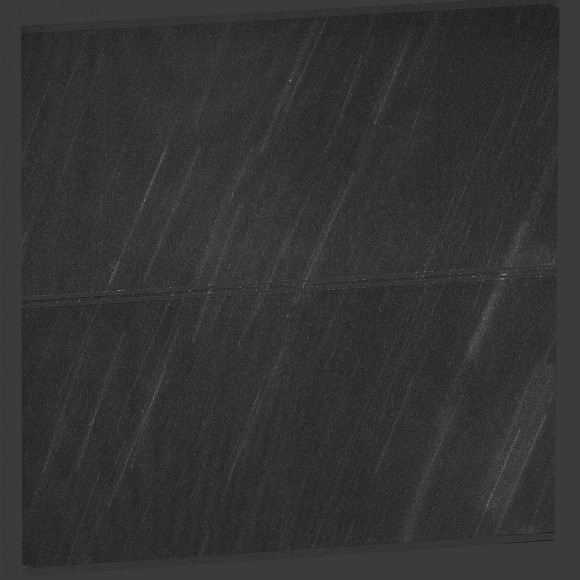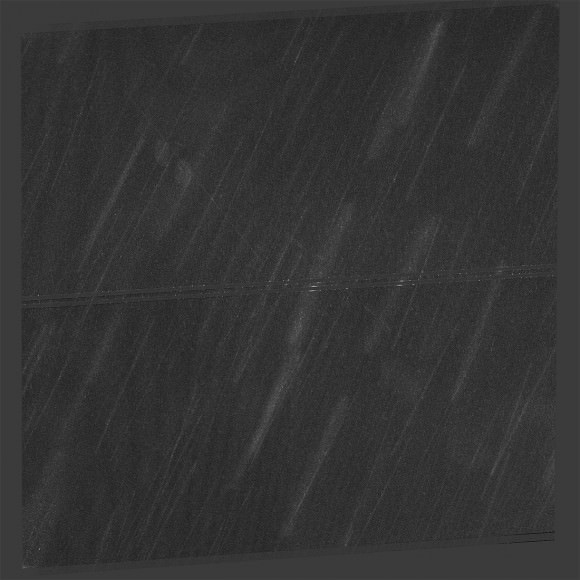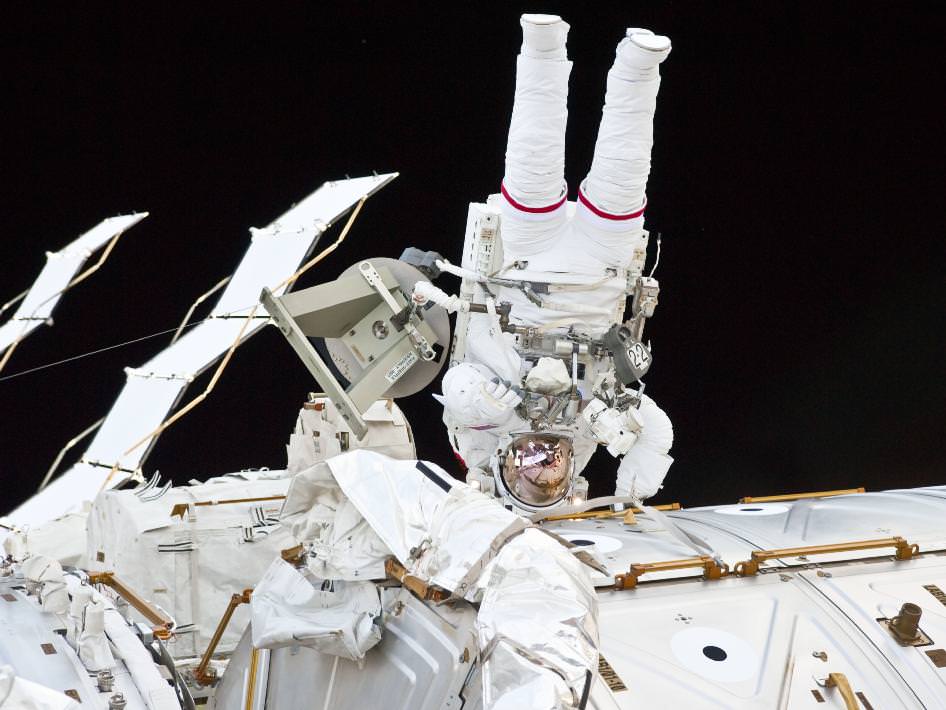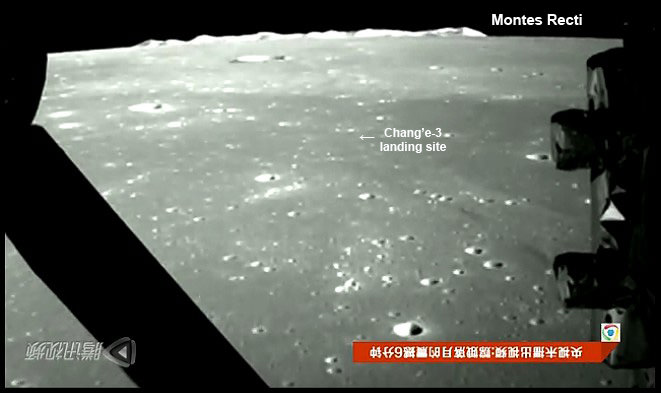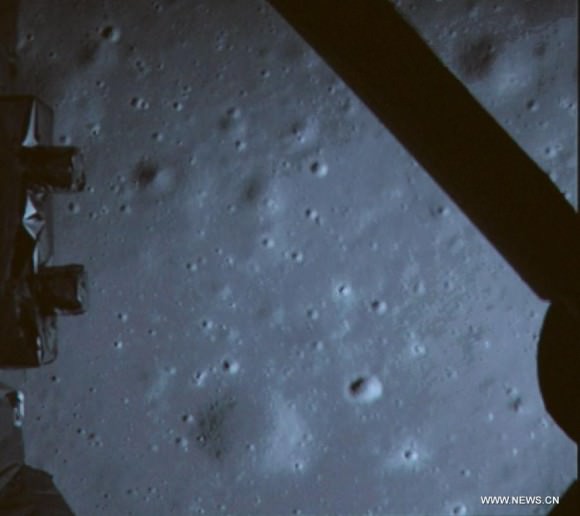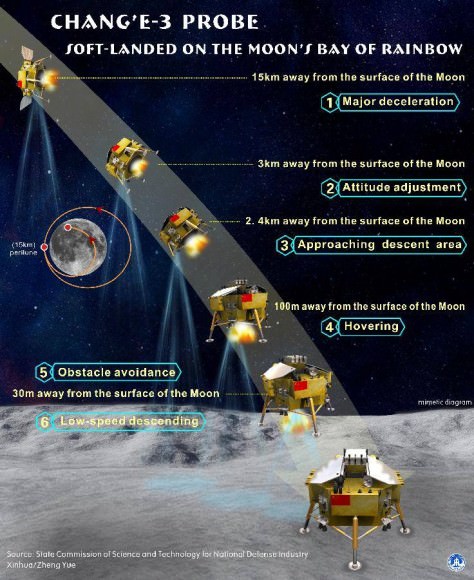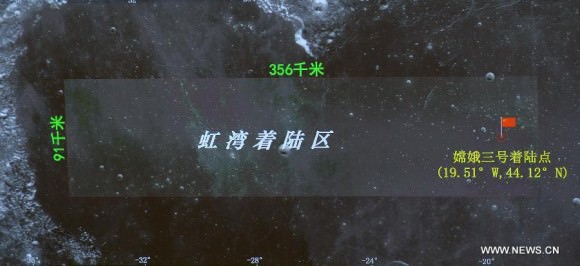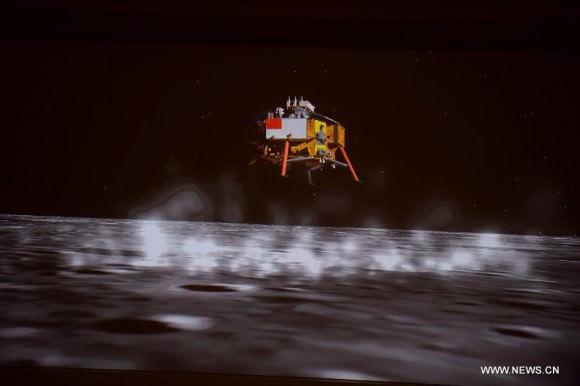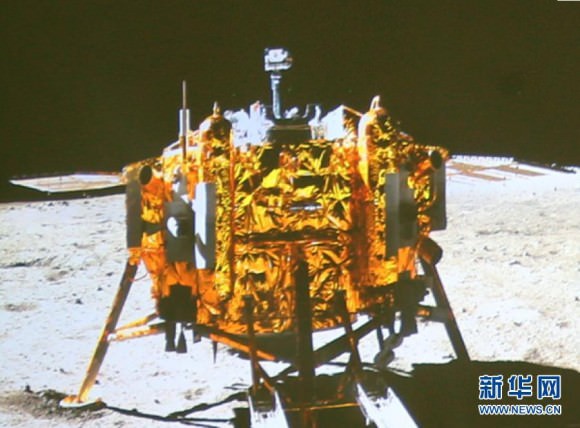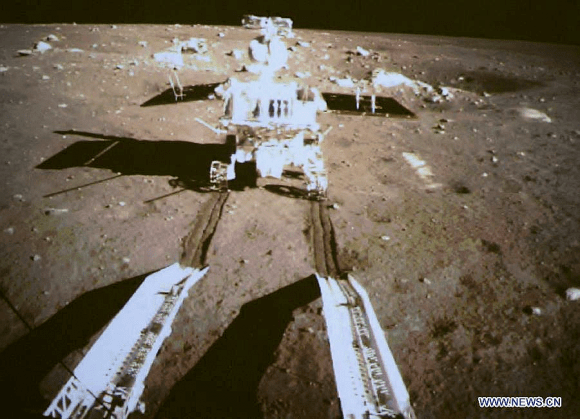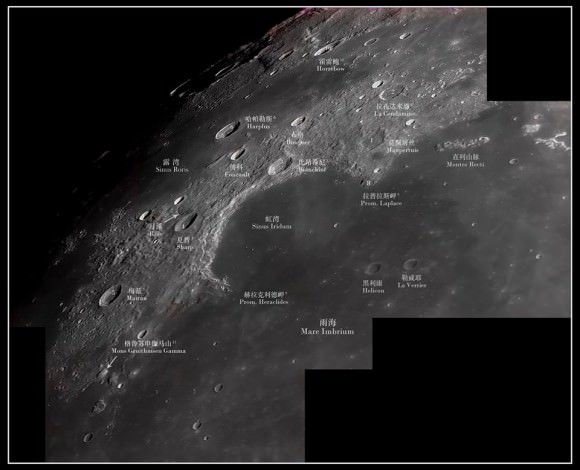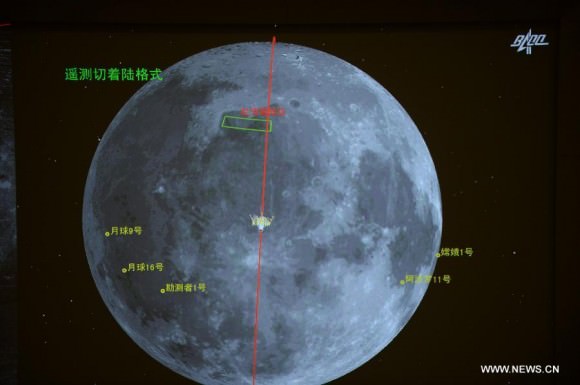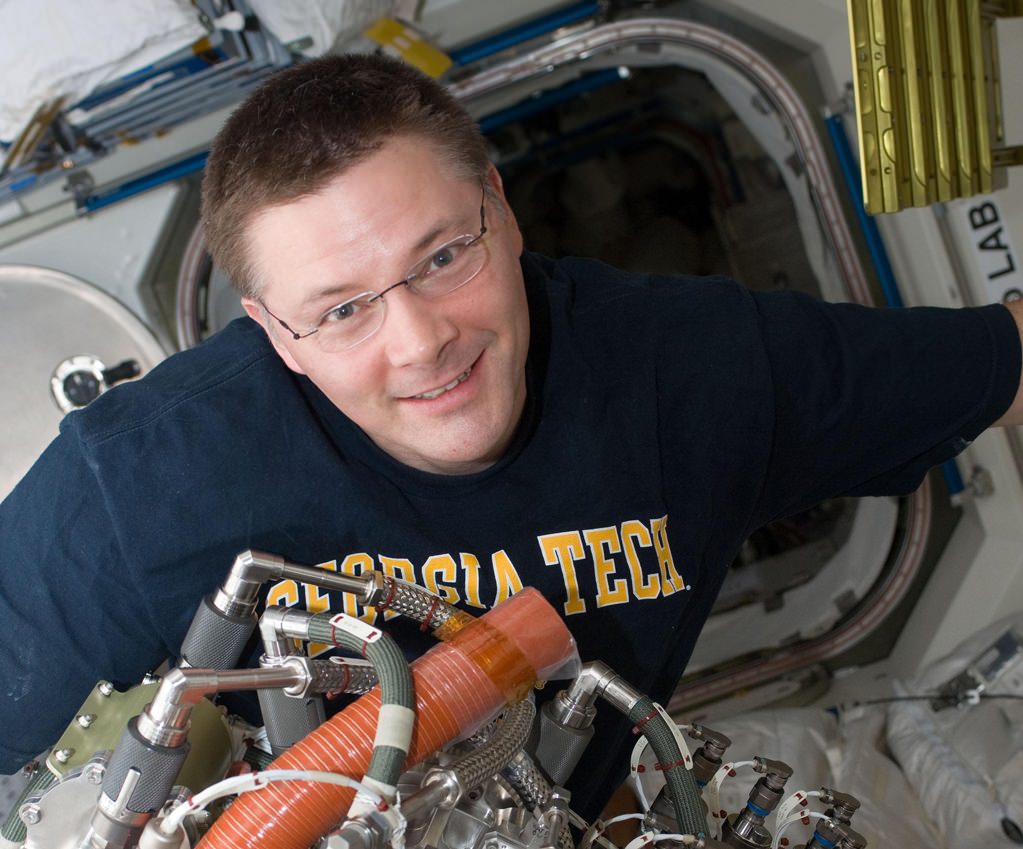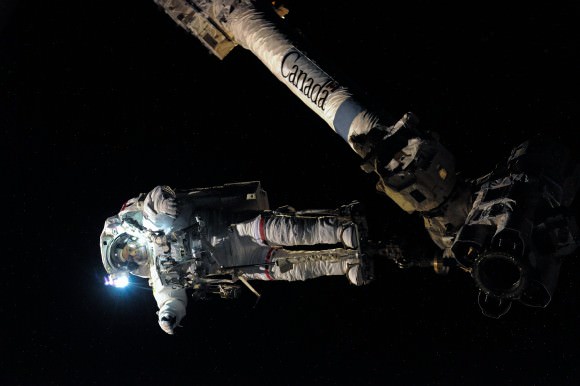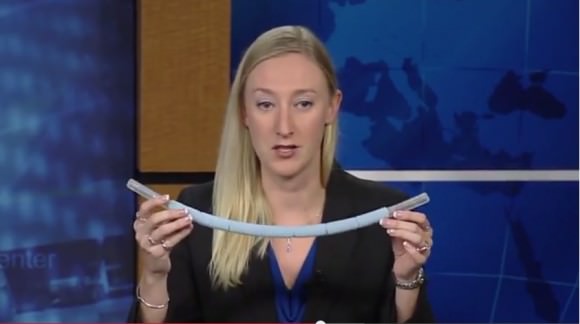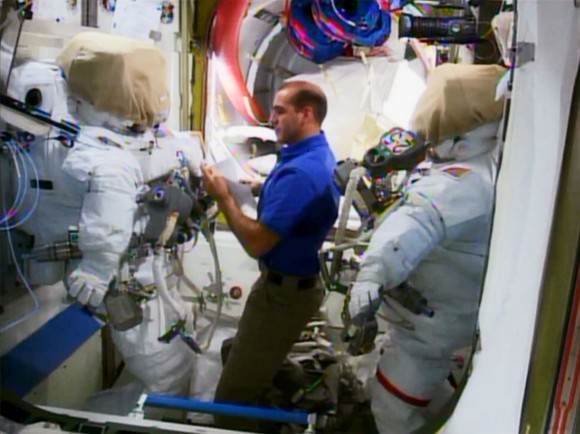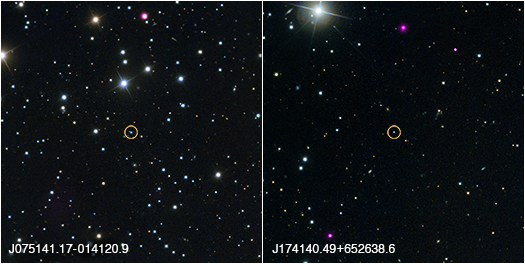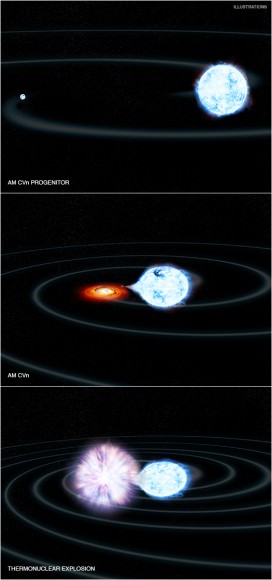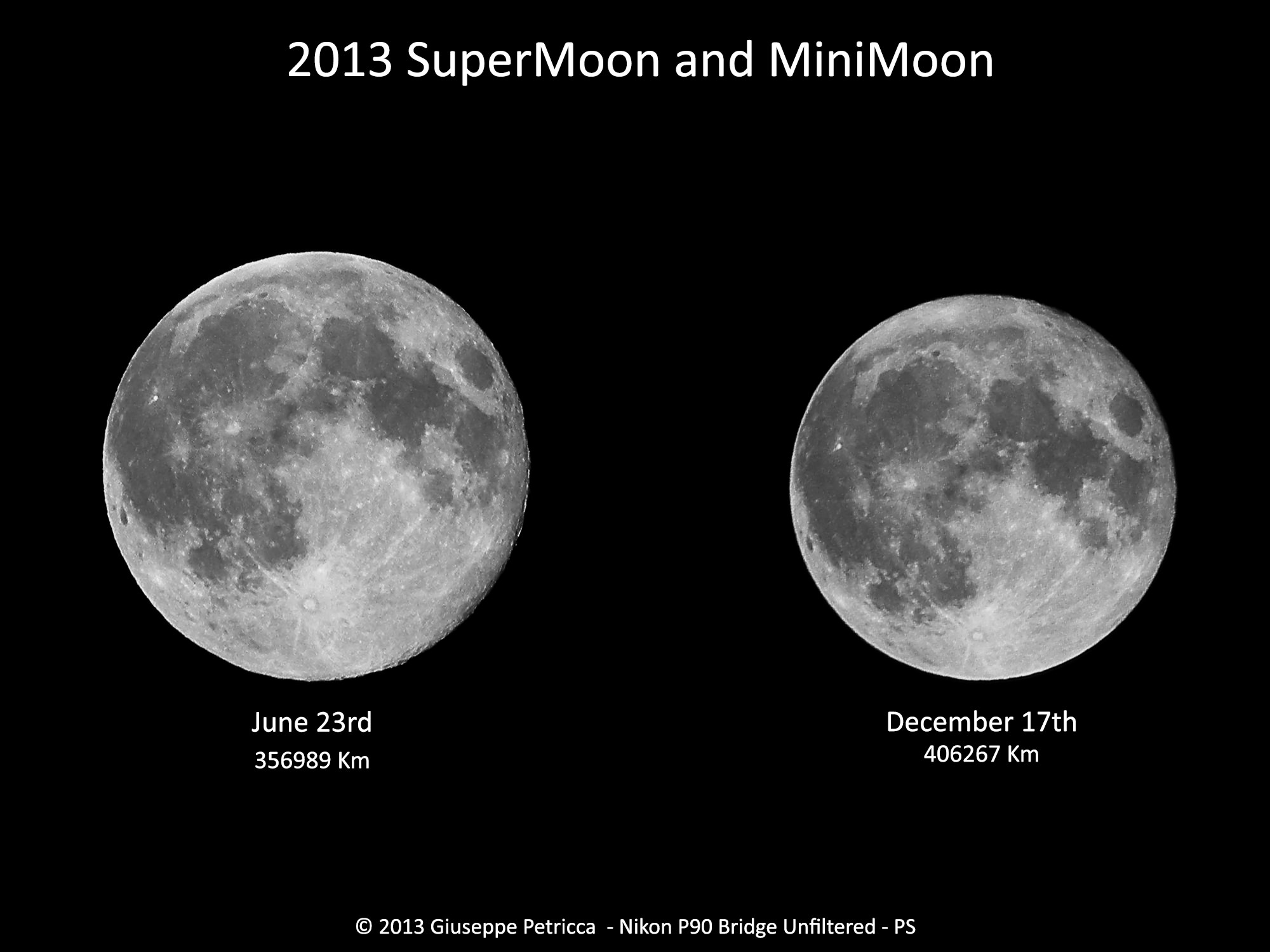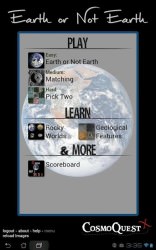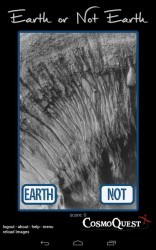Portion of 1st panorama around Chang’e-3 landing site after China’s Yutu rover drove onto the Moon’s surface on Dec. 15, 2013. The images were taken by Chang’e-3 lander following Dec. 14 touchdown. Panoramic view was created from screen shots of a news video assembled into a mosaic. Credit: CNSA/CCTV/screenshot mosaics & processing by Marco Di Lorenzo/Ken Kremer
See the complete panorama below
Story updated[/caption]
China’s inaugural Chang’e-3 lunar lander has snapped the missions first panoramic view of the touchdown spot at Mare Imbrium.
Chinese space officials have now released the dramatic surface imagery captured by the Chang’e-3 mothership on Dec. 15, via a video news report on CCTV.
To make it easier to see and sense ‘the new view from the Moon’, we have created screen shots from the rather low resolution TV broadcast and assembled them into a photo mosaic of the landing site – see above and below mosaics by Marco Di Lorenzo and Ken Kremer.
The Chang’e-3 mothership imaged the stark lunar terrain surrounding the spacecraft after the ‘Yutu’ rover perched atop successfully drove all six wheels onto the moon’s surface on Dec. 15, barely 7 hours after the momentous landing on Dec. 14.
The individual images were taken by three cameras positioned around the robotic lander.

Chinese scientists then pieced them together to form the lander’s first panoramic view of the lunar surface, according to CCTV.
“This picture is made of 60 pictures taken 3 times by the rover. The rover used three angles: vertical, 15 degrees tilted up, and 15 degrees down…so that we get an even farther view,” said Liu Enhai, Designer in Chief, Chang’E-3 Probe System, in a CCTV interview
The panoramic view shows ‘Yutu’ and its wheel tracks cutting a semi circular path at least several centimeters deep into the loose lunar regolith at the landing site at Mare Imbrium, located near the Bay of Rainbows.
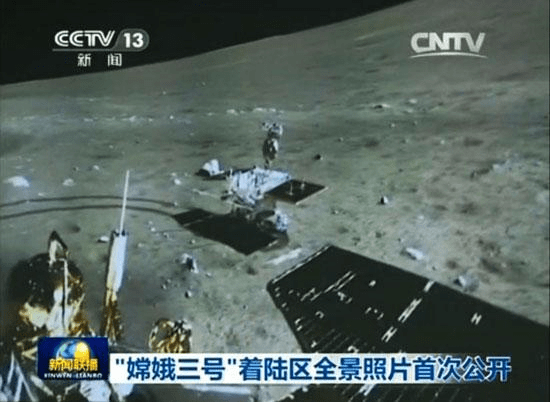
A significant sized crater, several meters wide, is seen off to the left of Yutu and located only about 10 meters away from the Chang’e-3 lander.
Several more craters are visible in the pockmarked surface around the lander.
Mission leaders purposely equipped the lander with terrain recognition radar and software so that it could steer clear of hazards like craters and large boulders and find a safe spot to land.
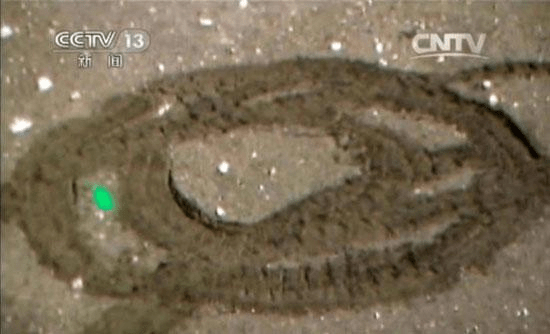
Indeed just prior to touchdown, the lander actually hovered at an altitude of 100 meters for about 20 seconds to avoid the craters and rock fields which could have doomed the mission in its final moments.
See the dramatic Chang’e-3 landing video in my earlier report – here.
Here is our annotated screen shot from the landing video showing the eventual landing site in the distance:
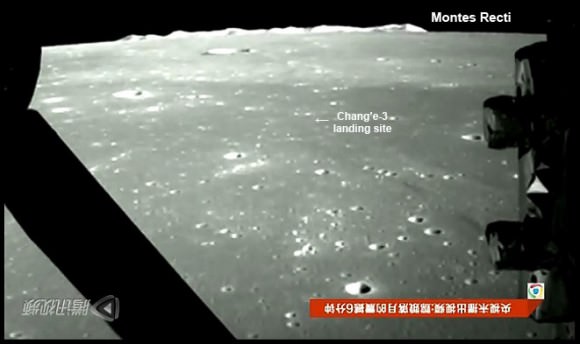
The 140 kilogram Yutu rover then turned around so that the lander and rover could obtain their first portraits of one another.
“The rover reached the point of X after it went down from the lander, then it established contact with the ground. Then it went to point A, where the rover and lander took pictures of each other. Then it reached point B, where it’s standing now.” said Liu Jianjun, Deputy Chief Designer, Chang’E-3 Ground System, to CCTV.
China thus became only the 3rd country in the world to successfully soft land a spacecraft on Earth’s nearest neighbor after the United States and the Soviet Union.
Chinese President Xi Jinping and space agency leaders have hailed the Chang’e-3 mission as a complete success for China.
The Yutu rover, which translates as ‘Jade Rabbit’ will use its science instruments to survey the moon’s geological structure and composition on a minimum three month mission to locate the moon’s natural resources for use by potential future Chinese astronauts.
The lander will conduct in-situ exploration at the landing site for at least one year, say Chinese officials.
Hopefully, China will quickly start releasing full resolution imagery and video taken by the Chang’e-3 lander and Yutu rover at a dedicated mission website, like NASA does, rather than issuing photos of imagery from projection screens and televisions – so that we all can grasp the full beauty of their tremendous lunar feat.
Stay tuned here for Ken’s continuing Chang’e-3, LADEE, MAVEN, MOM, Mars rover and more news.
Ken Kremer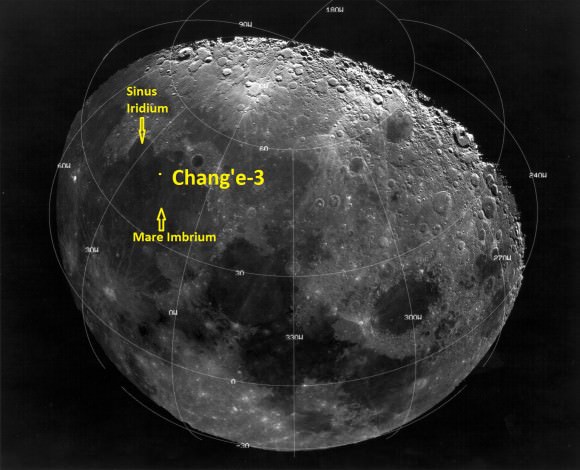 Landing site of Chinese lunar probe Chang’e-3 on Dec. 14, 2013. [/caption]
Landing site of Chinese lunar probe Chang’e-3 on Dec. 14, 2013. [/caption]

